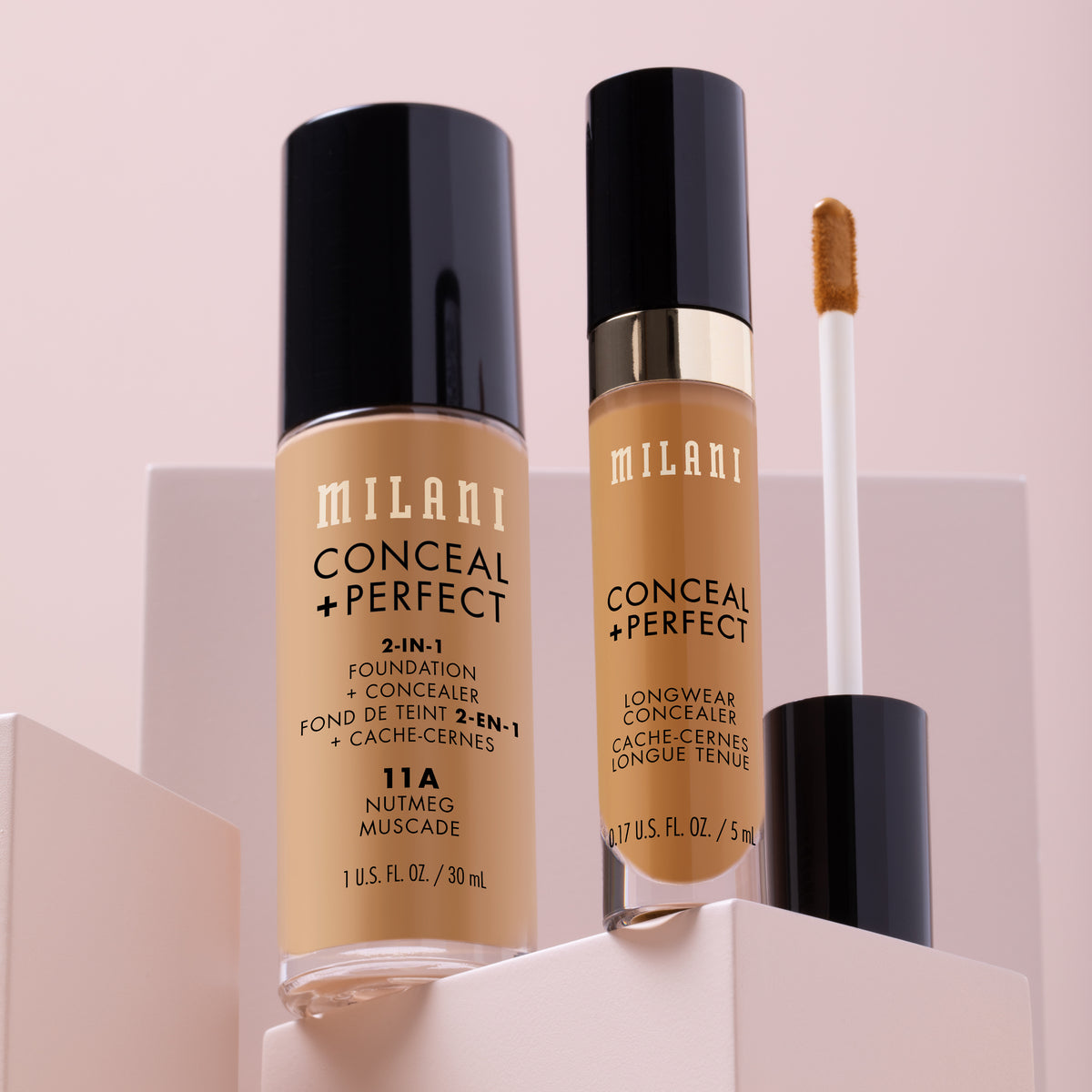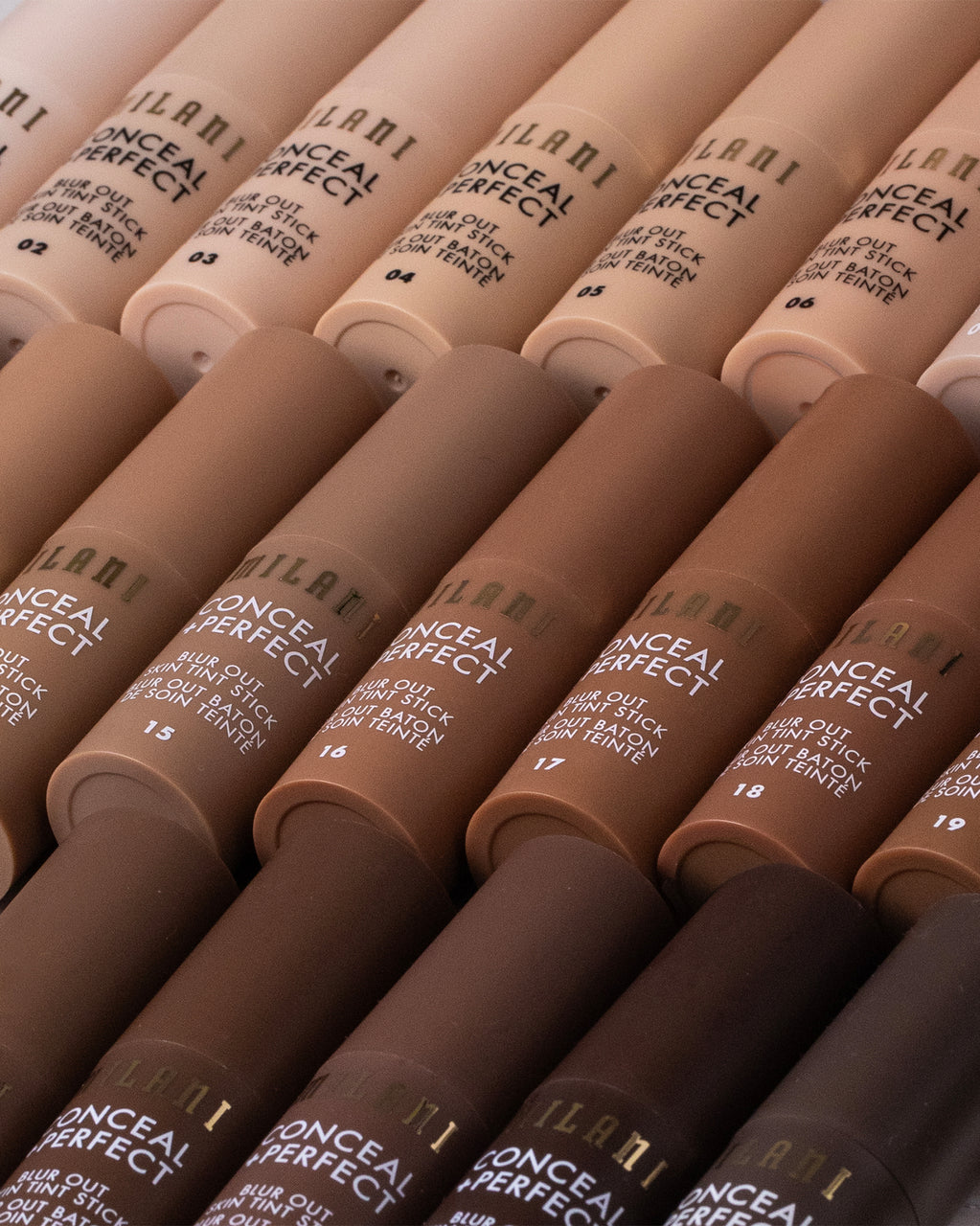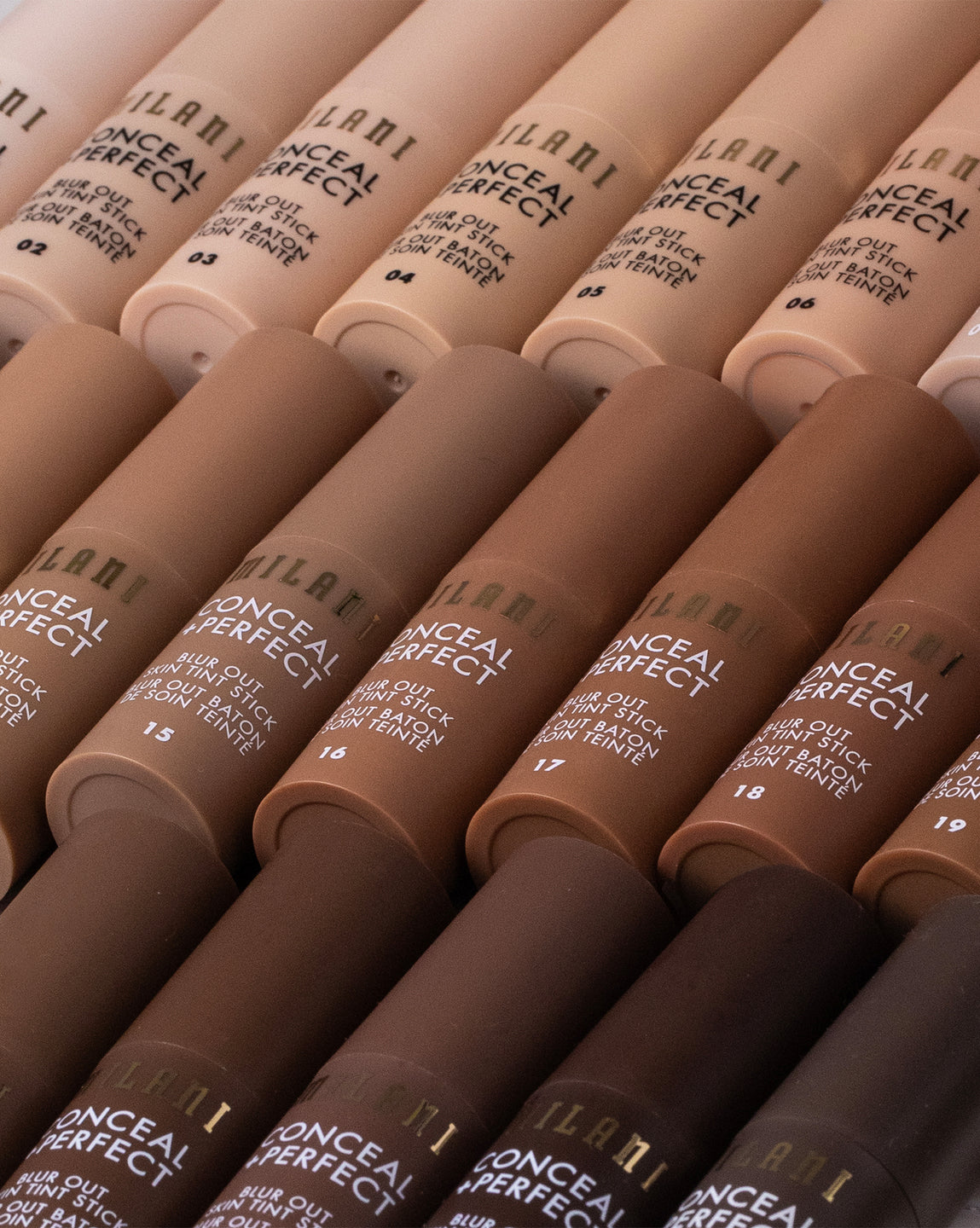
When to Apply Foundation v. Concealer?
Foundation and concealer provide a blank canvas, evening out skin tone to create a backdrop for the rest of your makeup. The products look alike and, on the surface, seem to have similar results. Some people use foundation and concealer interchangeably or have trouble figuring out which product to apply first. Others assume they only need one of these items.
While foundation and concealer play similar roles, each product has a distinct purpose. These products come in different varieties that have their own separate benefits, such as hydrating the skin or reducing eye circles. Two-in-one products combine the benefits of foundation and concealer to save time during your makeup routine.
Typically, foundation and concealer work best when used together instead of individually. Learn the differences between concealer vs. foundation and how to best incorporate them into your skin care routine.
Foundation Basics
Foundation is a cream or powder you apply to your entire face to hide imperfections and even out your skin tone. You can apply foundation without other products, such as lipstick and eye shadow, if you want a natural look that minimizes the appearance of blemishes.
Before applying foundation, wash your face to remove grease, dirt and debris. Exfoliate, if necessary, to remove dead skin cells. Next, moisturize your skin to keep it plump and elastic. Wait for your skin to dry, then add primer in preparation for your foundation.
Finally, apply foundation, starting in the center of your face and gradually sweeping outward. Use gentle motions and a dedicated brush or sponge to avoid damaging your skin, and cover your whole face for a more consistent texture and tone.
Milani offers one of the best full-coverage foundations for various skin tones. Cream foundations make your skin glow while powder foundations create a matte, natural look. Select foundations nourish your skin with natural ingredients, such as green tea and coconut water.
Concealer Basics
What is concealer? Like foundation, concealer hides imperfections, such as redness and dark spots. However, you don't apply concealer to your entire face. Instead, you apply concealer to the areas that need the most treatment. Concealers usually provide thicker coverage than foundation and come with other benefits, such as under-eye brightening.
To apply concealer, start with your pre-treatment and foundation, then dab the concealer on the blemishes you want to cover. Use under-eye concealer to treat bags and dark circles beneath your eyes. Choose a concealer that matches your foundation. Don't rub the concealer into your skin; doing so could cause smearing or produce a cakey effect.
Hack: Wait 5 minutes for your concealer to set before blending it with the rest of your makeup. This helps achieve smooth, even coverage.
Milani concealer makeup features rich creams that glide across your skin. Some products are vegan-friendly and offer added nutrients, such as vitamin E. Others nourish your skin to keep it fresh and glowing. Use the color charts to find a shade that matches your Milani foundation for a more cohesive result.
When to Use Only One
Typically, you shouldn't use concealer as a foundation because concealer has a thicker consistency that could clog your pores and lead to breakouts. Likewise, you shouldn't use foundation as a concealer because it's too thin to effectively hide imperfections. If you're in a hurry, you can use a thicker foundation, but don't apply too much.
You can use concealer without a foundation if you have naturally even skin or prefer the minimalist look. Simply wash and moisturize your face as usual, then apply concealer to lines and dark spots. Use a minimal amount of concealer and blend well so that it doesn't stand out.
Two-in-one products combine foundation and concealer so that you can save time on your routine. They protect and cover your skin, but if you're aiming for a specific look, using foundation and concealer separately provides more control over your makeup.
Which Should I Apply First?
Should you apply concealer or foundation first? Generally, apply foundation first so that you have a base for the concealer. If you apply concealer first, the product might smudge and change your skin's appearance. As a result, you'll have to wipe it off and start over or add more layers, which can be wasteful.
Applying foundation first shows you which blemishes need extra coverage. You can hide wrinkles and dark spots, then brighten dull areas of your skin. If you're using concealer as a highlighter, choose a shade that's lighter than your foundation. Your skin will look clean and fresh when you're done.
Only use concealer first if you're applying a powder foundation instead of a liquid one. Applying a powder foundation first means that the makeup will smear when you add the liquid. Start with the concealer, then use a brush to lightly apply the foundation and blend it with the concealer.
Final Thoughts
Concealer and foundation play important roles in your skin care regimen. When used correctly, they hide blemishes, prepare your skin for makeup, cover your skin without making it feel greasy and provide other benefits depending on the product. Your skin will have a healthy shine or natural matte finish afterward.
Hack: Use a Milani setting spray between layers to hold your foundation and concealer in place and give your skin an extra glow. A setting spray also helps you blend the concealer into the foundation for a uniform appearance.
These tips can help you achieve your ideal look. But ultimately, wearing makeup is about experimenting and having fun. Swap foundation for concealer or vice versa if it works better for your skin. Try powder and liquid foundations to see how they interact with the rest of your makeup. Different shades can hide or highlight parts of your skin.
Overall, don't be afraid to try new products and looks. You won't harm your skin if you apply the products correctly, and you might walk away with your new favorite style.

